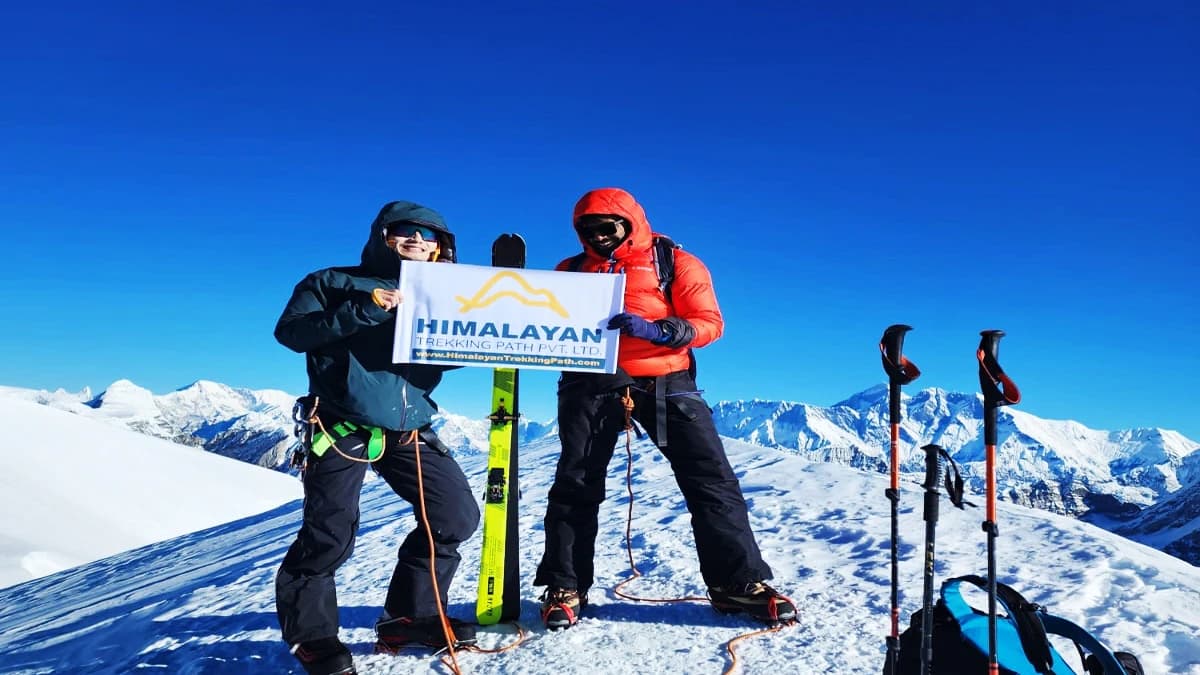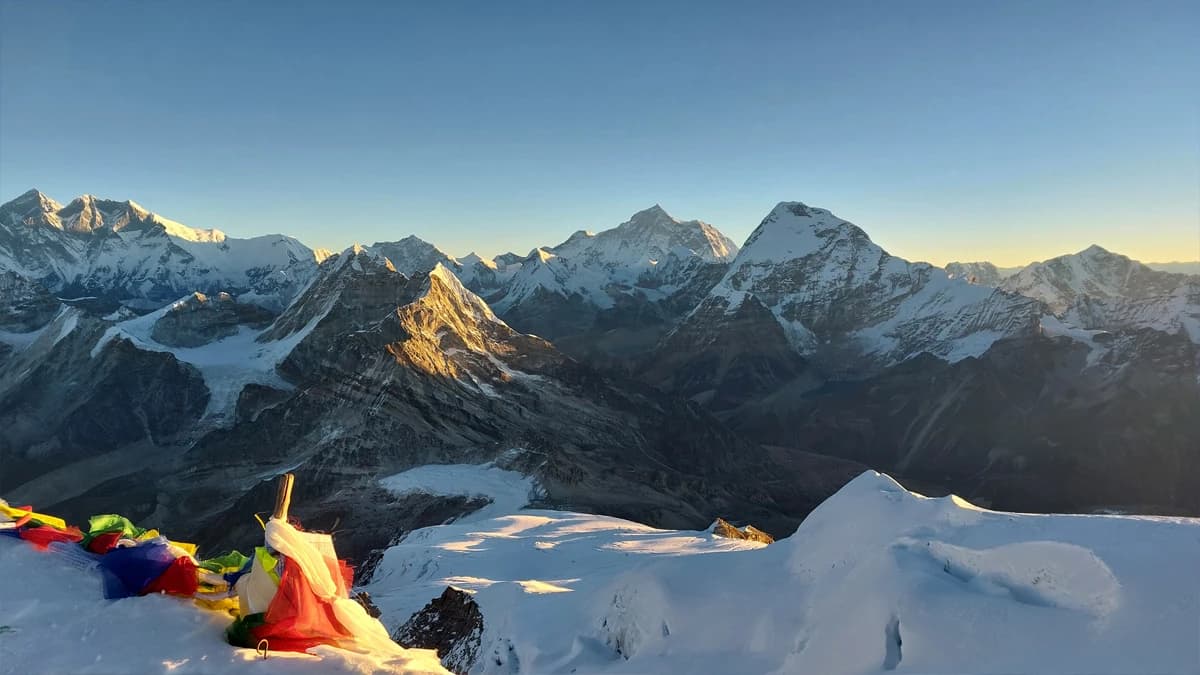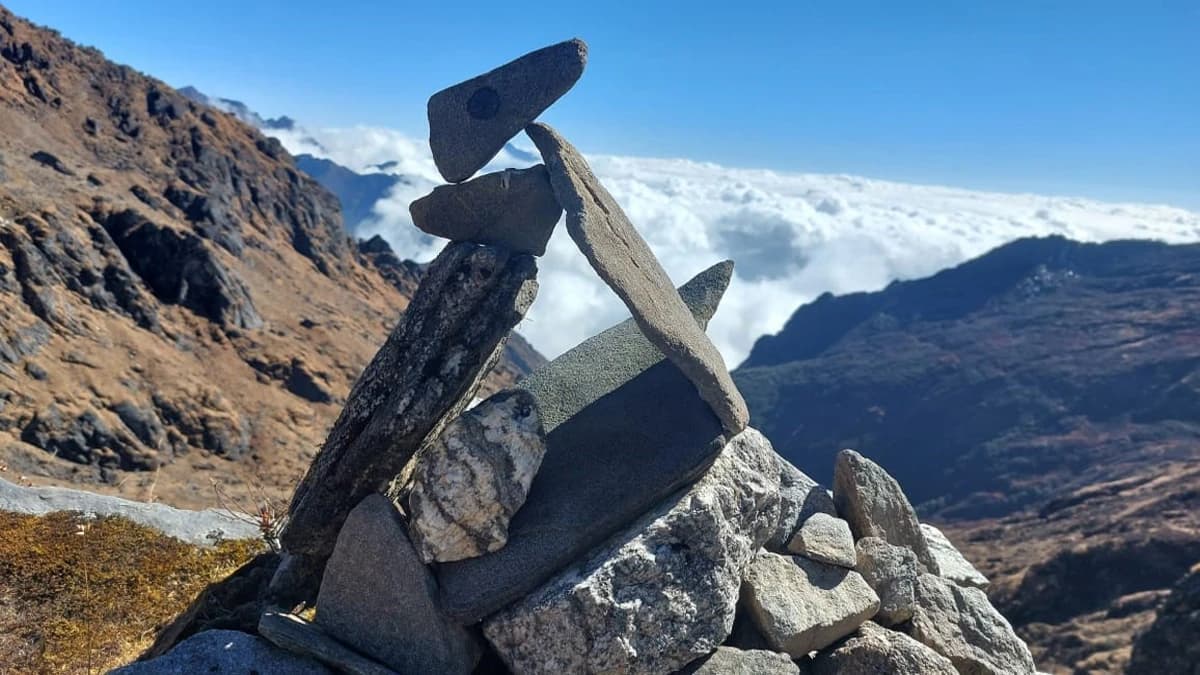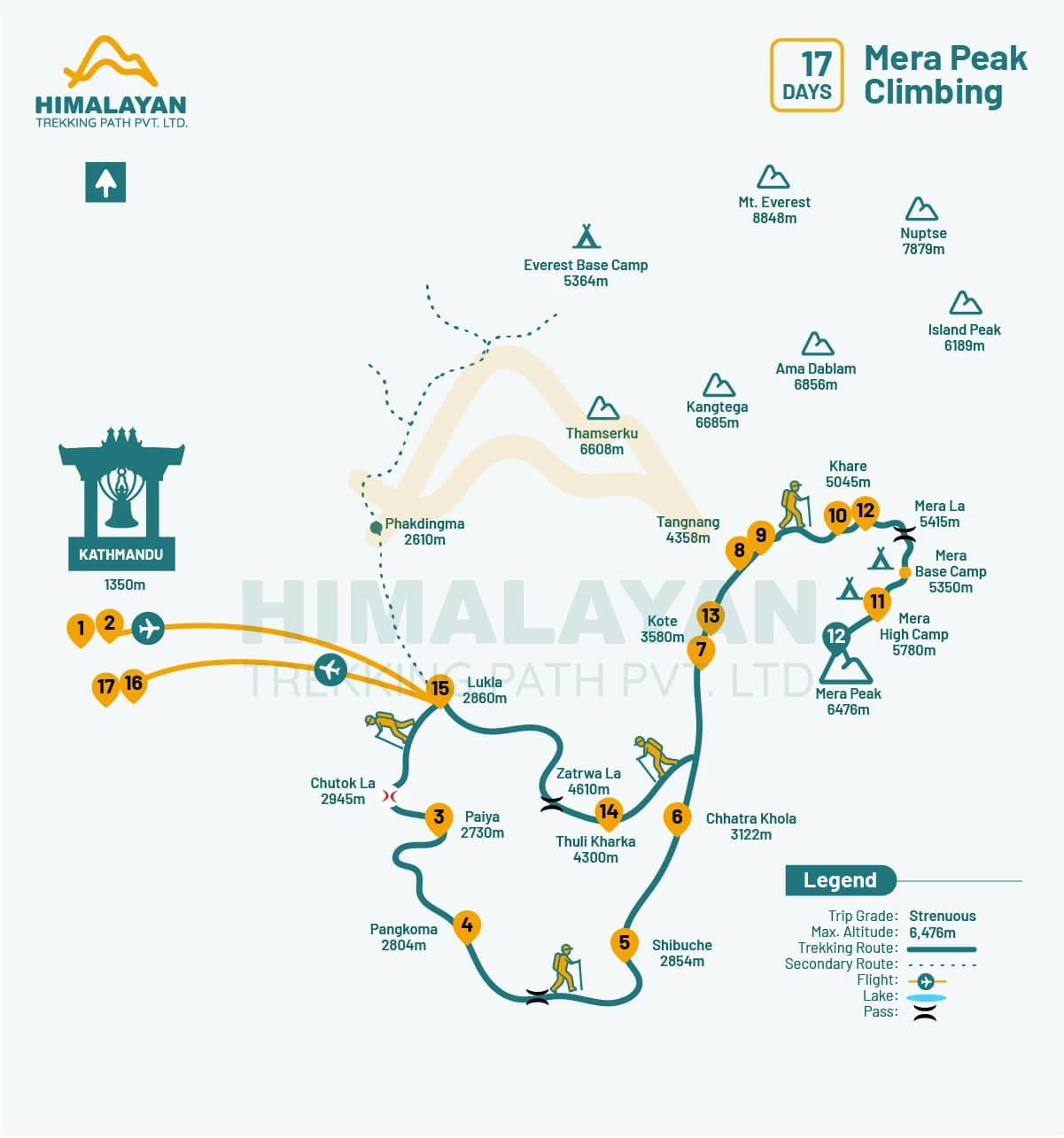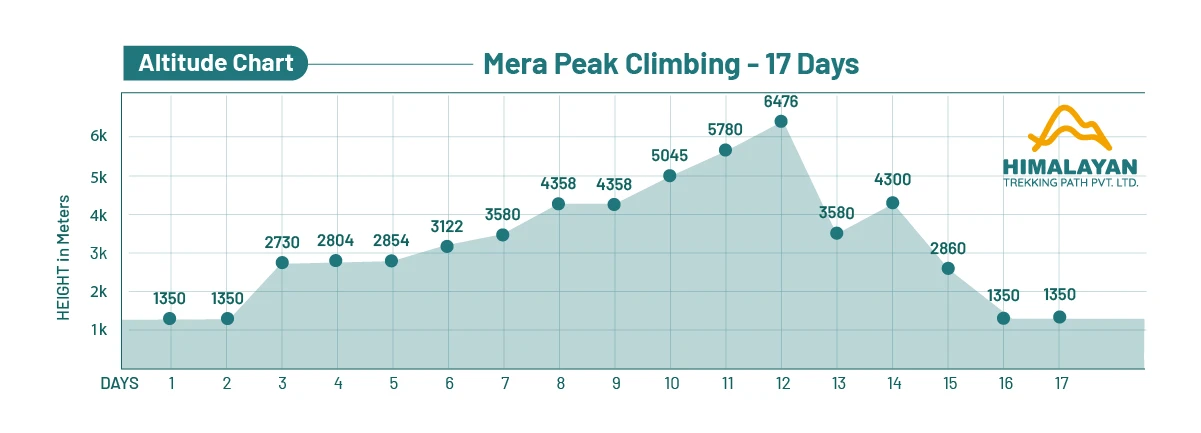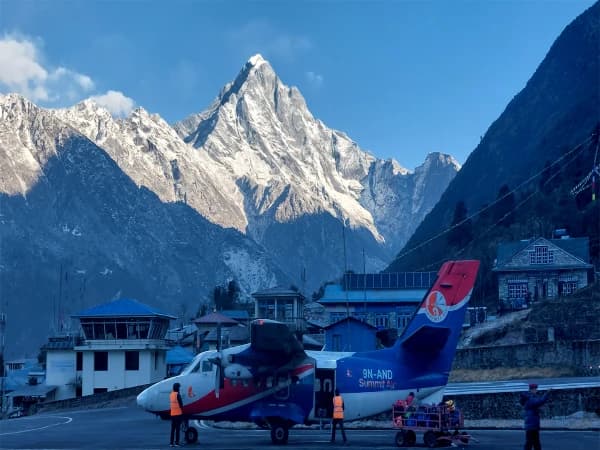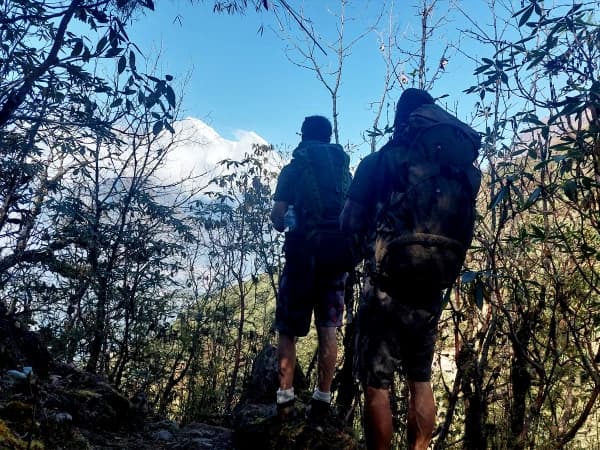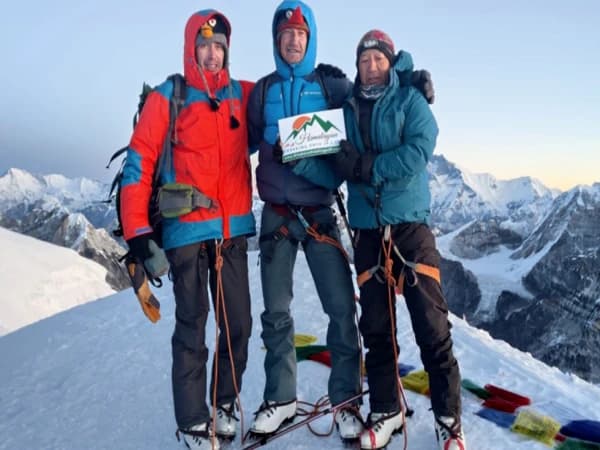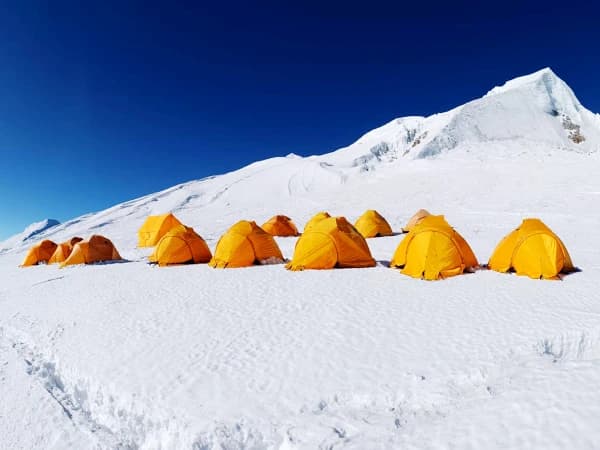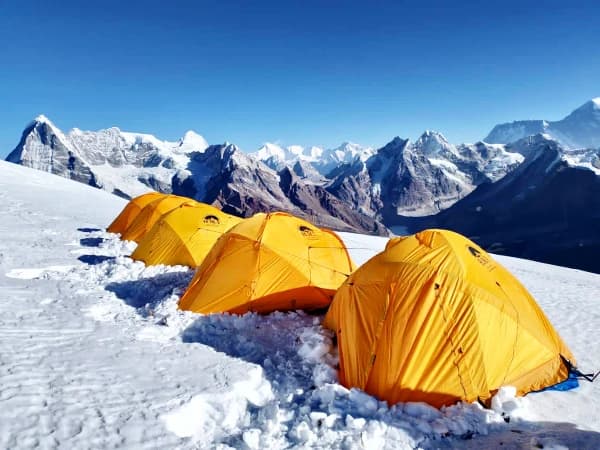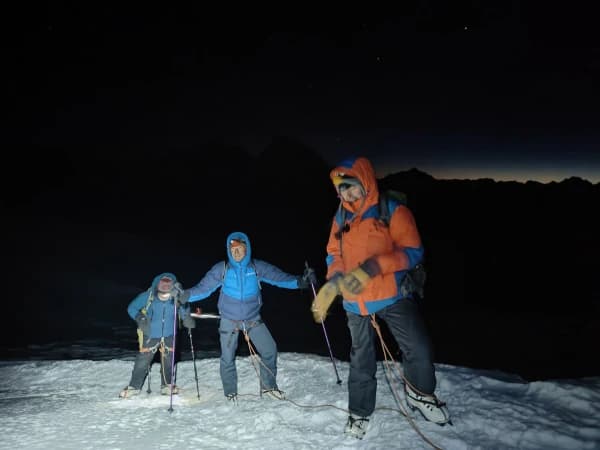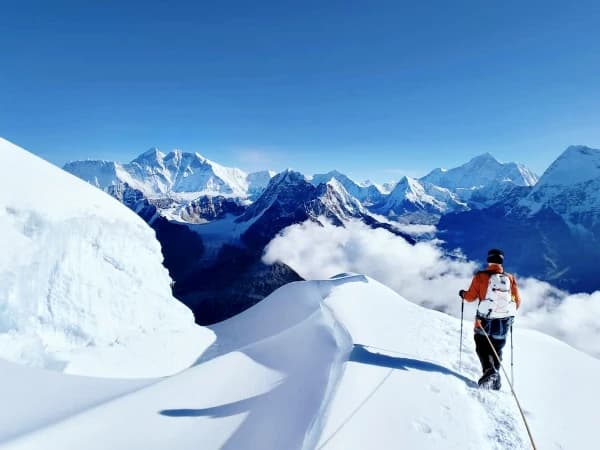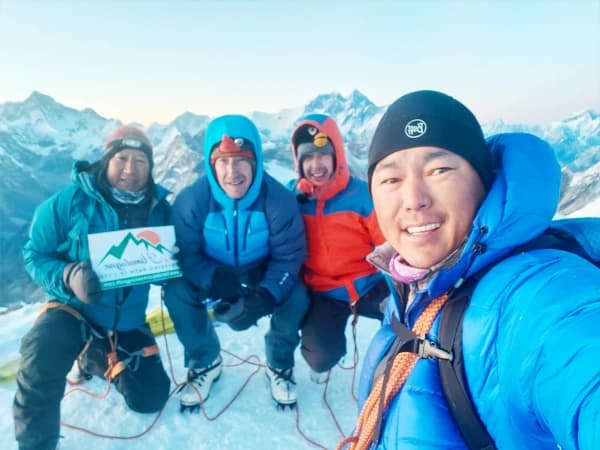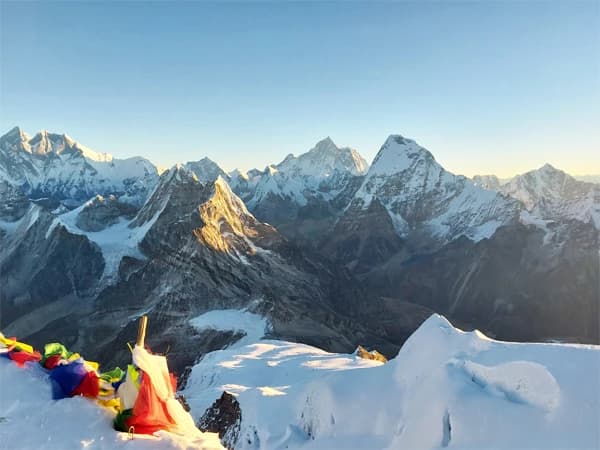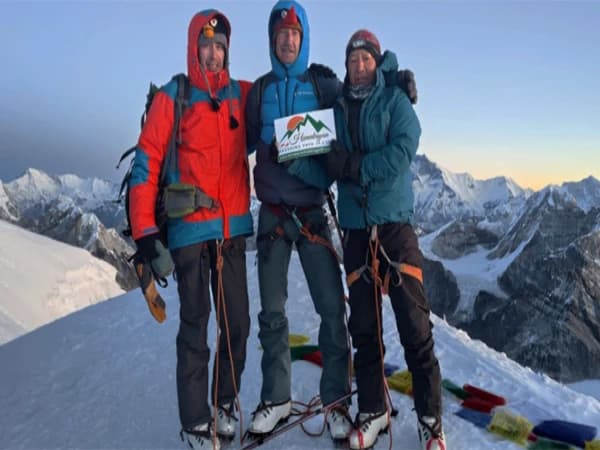Mera Peak Climbing
There are countless snowy mountains in Nepal. In fact, the country is home to more than 1900 snow-capped mountains and is an ideal destination to quench your thirst for reaching the summit of a mountain. You must know first about the difference between expedition and peak climbing. Both these terms are used to describe climbing mountains. However, expedition refers to climbing mountains above 7000 m height and peak climbing refers to climbing trekking peaks below 7000 m height. It should also be noted that some of the mountains below the expedition altitude level require an expedition permit due to technical reasons. For example, Mt. Amadablam (6812 m) and Lobuche West (6145 m) are trekking peaks but the climber must get an expedition permit from the Nepal Mountaineering Association (NMA). Choose the Mera Peak Climbing in Nepal and reach the top of Nepal’s highest trekking peak!
Highlights of the Mera Peak Climbing
- Explore Kathmandu’s Hidden Beauty before taking a flight to Lukla
- Experience the most Thrilling flight between Kathmandu and Lukla before and after the Mera Peak Climbing
- Witness the Magnificent aerial mountains and lush green valley views
- Embark on the classical Mera Peak Climbing route via Paiya and Pankoma
- Discover the rich flora and Funa as you cross the different climate zones during the Adventure
- Soak in the most unique scenery and serenity of the trail of the world
- Immerse yourself in the multi-ethnic culture, organic meals, warm hospitality, and tradition.
- Walk through rugged trails and build your stamina for the challenging ascend
- Participate in the short and useful training in Khare before commencing to Mera Peak climbing
- Start Mera peak climbing from Khare and walk along the glacier to High Camp (5800m)
- Ascending the Mera peak (6476m), the highest trekking peak in Nepal
- Enjoy the breathtaking mountain views from Mera Summit to Everest, Makalu, Kanchenjunga, Cho Oyu, and Lhotse.
- On May 20, 1953, Col. Jimmy Roberts and Sen. Tenzing, nicknamed The Foreign Sportsman, achieved the remarkable feat of being the first to ascend Mera Central.
- Trek Back to Lukla via Zatrwa La Pass (4620m)
- Concludes the Mera peak climbing after taking a flight back from Lukla to Kathmandu
Mera Peak Climbing Routes and Packages
Mera Peak climbing is the third most popular climbing peak in Nepal after the Island Peak and Lobuche East Peak. It is an easy and accessible route to climb; thus, it is an ideal peak for both beginners and seasoned climbers. For the Mera Peak Climbing, several different routes are popular. Therefore, after a long working experience in the field, we bring you three distinct routes for the Mera Peak Climbing and a well-crafted package for your choice. Each of the packages offers an unparalleled experience of the hidden beauty of the region and different levels of difficulty. Let’s learn about the detailed routes, packages, and costs of the Mera Peak with Himalayan Trekking Path Pvt. Ltd.
- Mera Peak Climbing Upper Route: It is a short and challenging trail that starts from Lukla to Mera Summit via Zatrawa La Pass(4620m) and returns the same way to Lukla and back to Kathmandu. From Lukla, it quickly brings you to the high pass and the trail is mainly off the beaten path rugged rocky trail. This is also called the Upper route for the Mera Peak Climbing. Learn the detained Mera Peak Climbing upper route's itinerary, cost, and package.
- Mera Peak Climbing Lower Route: This package is called Lower Route for Mera Peak Climbing which encircles the entire region. It is the best package for the beginner because it starts from the Lukla and treks to Paiya then heads to Khare. Subsequently, from the Mera peak climbing return to Lukla from the Upper route. Find the detailed Mera Peak Climbing Lower route's Package itinerary and cost
- Mera Peak Climbing by Overland: This is the newly developed trekking package for Mera Peak. You will start the trip from Kathmandu with a scenic and adventurous ride to Khari Khola via Salleri. Then from Khari Khola commence the trek to Pankoma and then follow the classic trek to Mera Summit then back to Lukla from the Zatrawa La Pass trail. Find the Mera Peak Climbing Overland Package's cost, route, and itinerary.
What are the different itineraries of the Mera Climbing trip?
The team of travel planners here at the Himalayan Trekking Path consists of Everest Summiteer, Sherpa guides, and International Mountain Guides. Therefore, our itineraries are always less risky and more gains in terms of safety and success rate. Climbing any mountains is divided into two parts. The first part is the trek to the base camp of the mountain and the second part is to climb to the top. The trekking portion is led by a trekking guide and the climbing portion is led by a Sherpa Climbing guide. It is equally crucial to operate the trek to base camp in the best possible way with enough acclimatization. We offer you three options to reach Mera Base Camp either from the Lukla section or from the Khari Khola section.
For Mera Peak Climbing flight to Lukla or a road trip to Khari Khola via Salleri are two major options to start the trek. In addition to these two trekking routes, the Paiya route is considered the classical Mera Peak Climbing trek route. All these options are available with us at the best possible rate.
Lukla to Zatrwa La Pass (4620 m)
The most popular and shorter itinerary of Mera Peak Climbing is from the town of Lukla. The Lukla Flight takes about 35 minutes from Kathmandu or 15 minutes from Manthali Airport Ramechhap. Please check with our travel planners to know more about the Lukla Flights. If you are using the flight then Lukla is the trailhead of this trekking route. Trekkers have to trek on a well-maintained trail for about 3 hours through green lush forests and scenery of outstanding deeper valleys with long mountain ranges in the background. The trail gradually ascends slightly steeper a few meters before reaching Chutanga village which is a small village with few tea houses located in the small valley in the middle of the gigantic hill. The trekking from Chutanga to Thuli Kharka via Zatrwa La Pass is challenging. Trekkers have to walk uphill on a winding trail full of pebbles and rocky boulders. They have to cross several stone and wooden bridges over small streams. The most daunting section is the stone staircase section few meters before reaching the top of the pass. Finally, on this day, trekkers can see the final destination, Mount Mera. Once at the top, trekkers can trek downhill to Thuli Kharka. It is the hardest way of doing the trek but it is equally scenic as well as consists of a shorter itinerary.
How to reach Khari Khola and avoid Lukla Flight for Mera Climbing?
Avoid the Lukla flight by choosing the road trip from Kathmandu to Khari Khola via Salleri. The road trip to Salleri is about 6 to 7 hours and it takes about 5 to 6 hours to reach Khari Khola from Salleri. The drive from Salleri to Khari Khola is on a bumpy graveled road. Therefore, you will have to use the four-wheeled jeep. Upon reaching here, trekkers trek to Pangomm which is in the Mera Circuit Trek route. The advantage of using Khari Khola route is that your trip becomes guaranteed departure! The major hurdle for any kinds of climbing or trekking in the Everest region of Nepal is the unpredictable nature of Lukla Flights.
Taking Lukla to Paiya Route as a Mera Circuit Trek
The classical way to reach Mera Peak is by taking the route of Paiya. Trekkers have to use Lukla flight and descend downhill to Surke and then uphill climb to Paiya. There are many passes in this section and a relatively longer itinerary. However, the scenery of mountains and authentic Sherpa villages are more in this section. There are terraced farmlands, countless streams, villages, monasteries, and diverse vegetation in this trail in comparison to Zatrwa La Pass route.
How difficult is to reach Mera Summit?
To reach Mera Summit, climbers don’t require oxygen and extreme technical knowledge. A rope tied with the climbing guide and good pair of crampons attached climbing shoes are enough to reach the top. However, you require good amount of physical fitness and cardio-vascular abilities. There is less density of oxygen in the high-altitude places. The air is thin and there are many steep uphill/downhill sections. The highest place to spend overnight during this trip is at the Mera High Camp which is at an altitude of 5800 m from sea level. So, don’t underestimate the trip of climbing Mera Peak even if it is the easiest trekking peak to climb in Nepal.
Do I get to see Mount Everest from Mera Top?
The top of Mera Peak offers splendid scenery of 5 top 10 mountains of the world including the world’s tallest Mt. Everest. Relish the chance to witness mountains like Makalu, Lhotse, Choyou, and Kanchenjunga from the top of Mount Mera. Besides these mountains, climbers can enjoy other various mountains including the mountains of the Tibetan region.
What is the success rate of Climbing Mount Mera?
The success rate of climbing Mount Mera is considerably higher than most of the trekking peaks of Nepal. The lack of technical requirements has increased the chances of successful ascent of the mountain. In an average, the success rate of climbing Mera is about 80 to 90 %. The major obstacles in successful climbing are the fatigue or bodily injury (diseases) and risk of altitude sickness. If you follow the proper itinerary prepared by the Himalayan Trekking Path then the success rate may become 100 % as our record is cent percentage in terms of climbing Mera! Stay hydrated and heed instructions of our guides to increase the chances of reaching the top.
Do I need training to climb Mera? Where do I get training to climb the mountain?
You don’t need extensive mountain climbing training to climb Mera Peak. All you need to know is the way to use rope while climbing and walking with crampons on! Build the physical fitness level and choose the right companion to climb. Climbers get basic rope handling training, walking with crampons, and mountaineering communication language in Khare acclimatization day. Behind the village on a small ridge, Sherpa guides help you do the drill repetitively until you get used to it before attempting to climb the mountain.
Can a beginner successfully complete the Mera Trekking Peak Climbing?
Yes, Mera Trekking Peak Climbing is suitable for all kinds of climbers including a beginner. As mentioned above, you require strong mental strength and good physical fitness to successfully complete the Mera Trekking Peak Climbing. For more details, contact our travel planners and state your body conditions as well as your motive to climb Mera. Our team of experts will help you overcome any kind of fear as well as provide you with proper climbing instructions. We help you fulfill your dream of reaching the summit of a snowy mountain!
Which is harder Kilimanjaro or Mera?
Mount Kilimanjaro (5895 m) is the highest mountain of the African Continent of the world. While comparing the difficulty level of Mera and Kilimanjaro, it is fairly difficult to do Mera than Kilimanjaro. However, climbers have to walk long hours during Kilimanjaro climbing but for Mera frequent acclimatization and average 6 hours of walking is enough. In terms of the trekking trail, too Mera Peak is difficult as climbers have to climb over the glacier and rocky rugged trail in Mera trip. However, the risk of altitude sickness is high on both these trips.
From which point do I need to wear crampons to climb Mera?
Trekkers have to wear crampons from Mera Base Camp which is about 2 to 3 hours from Khare. However, it depends upon the condition of the trail. If it is icy then you can use crampons otherwise on a rocky trail, we will not use the crampons. There are a few crevasses along the way. Walking on a vast glacier up to Mera High Camp offers the quintessential scenery of mountains like Everest and Nuptse.
How hard is it to stay in Mera High Camp?
The floor of a tent in Mera High Camp is unstable and you may have to sleep overnight in a hard surface. Staying overnight in 5800 m altitude is never easy but enough acclimatization and company of good guides and crew members will help you stay overnight in Mera High Camp easily. The campsite is at the edge of a cliff on a rocky face with a vertical ridge at the back. From the top of the ridge, we can see the beautiful large valley of Khare and beyond.
Cost of Climbing Mera Peak
The cost of Climbing Mera Peak differs according to the number of days and climbers’ preferences. On average, the cost starts from 2000 $ to 5000 $ per person. Please contact our travel planners to get the best cost and deals for any kind of peak climbing activity in Nepal. We are the experts of high-altitude adventure activities in Nepal. Our itinerary and the cost of the trip are highly flexible. Check out our includes and excludes section to know more about prices and services included in the peak climbing package.
Book the climb of the easiest mountain peak in the world above 6000 m altitude
Get to the top of 6476 m tall Mera Peak, which is the tallest Trekking Peak of Nepal. Even if it is the tallest trekking peak, climbing Mera is considered the easiest among all peaks of Nepal. So, don’t miss out on this fun-filled adventurous epic peak climbing journey.
Contact our travel planners today! Pack your bags and lace up your boots! The mountains of Nepal are calling you!
Mera Peak Climbing Cost for 2025/2026: What to Expect
The cost of the Mere Peak Climbing Complete Package starts from USD 2300 and reaches up to USD 5000 per person, depending on factors like group size and service. Also duration, way to travel, and the service that consists of the Package impact the cost of the Mera Peak Climbing. Learn about the exact cost of the 17-day Mera Peak climbing package. As per the package and itinerary and service mentioned package and itinerary, you will get the comprehensive package from USD 2300 to USD 3000 per person as per the group outlined below. In the package, you will get accommodation in Kathmandu and the Mountain, Permits, a Guide, a porter, a round-trip flight (Ktm-Lukla), Meals for the mountain, climbing gear except personal, and many more. The cost will be higher if you get a helicopter ride. For example, you can travel from Kathmandu to Lukla at USD500 to USD1000 per person and Similarly, from Kahre to Kathmandu at USD1200 to USD 2000 in a shared heli according to the season and situation. The private helicopter will be high costly than the sharing option. Let's make your plans today for Mera Peak climbing, Himalayan Trekking Path is here to offer the best assistance and cost for your lifetime jounrey.
- The cost for solo climbers to undertake the Mera Peak Climbing Expedition is USD 3000.
- For a group of 2 to 5 people, the cost per person for Mera Peak Climbing is USD 2500.
- If you have a larger group of 6 to 10 individuals, the cost per person for Mera Peak Climbing is USD 2300.
Note: Kindly be informed that in the mentioned cost the helicopter service is not included. If you want to get a helicopter ride the cost of the package increases!

